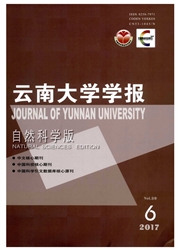

 中文摘要:
中文摘要:
Typhoon Meranti originated over the western North Pacific off the south tip of the Taiwan Island in 2010.It moved westward entering the South China Sea,then abruptly turned north into the Taiwan Strait,got intensified on its way northward,and eventually made landfall on Fujian province.In its evolution,there was a northwest-moving cold vortex in upper troposphere to the south of the Subtropical High over the western North Pacific(hereafter referred to as the Subtropical High).In this paper,the possible impacts of this cold vortex on Meranti in terms of its track and intensity variation is investigated using typhoon best track data from China Meteorological Administration,analyses data of 0.5×0.5 degree provided by the global forecasting system of National Centers for Environmental Prediction,GMS satellite imagery and Taiwan radar data.Results show as follows:(1)The upper-level cold vortex was revolving around the typhoon anticlockwise from its east to its north.In the early stage,due to the blocking of the cold vortex,the role of the Subtropical High to steer Meranti was weakened,which results in the looping of the west-moving typhoon.However,when Meranti was coupled with the cold vortex in meridional direction,the northerly wind changed to the southerly at the upper level of the typhoon;at the same time the Subtropical High protruded westward and its southbound steering flow gained strength,and eventually created an environment in which the southerly winds in both upper and lower troposphere suddenly steered Meranti to the north;(2)The change of airflow direction above the typhoon led to a weak vertical wind shear,which in return facilitated the development of Meranti.Meanwhile,to the east of typhoon Meranti,the overlapped southwesterly jets in upper and lower atmosphere accelerated its tangential wind and contributed to its cyclonic development;(3)The cold vortex not only supplied positive vorticity to the typhoon,but also transported cold advection to its outer bands.In conjunction with the warm and moist air
 英文摘要:
英文摘要:
Typhoon Meranti originated over the western North Pacific off the south tip of the Taiwan Island in 2010. It moved westward entering the South China Sea, then abruptly turned north into the Taiwan Strait, got intensified on its way northward, and eventually made landfall on Fujian province. In its evolution, there was a northwest-moving cold vortex in upper troposphere to the south of the Subtropical High over the western North Pacific (hereafter referred to as the Subtropical High). In this paper, the possible impacts of this cold vortex on Meranti in terms of its track and intensity variation is investigated using typhoon best track data from China Meteorological Administration, analyses data of 0.5x0.5 degree provided by the global forecasting system of National Centers for Environmental Prediction, GMS satellite imagery and Taiwan radar data. Results show as follows: (1) The upper-level cold vortex was revolving around the typhoon anticlockwise from its east to its north. In the early stage, due to the blocking of the cold vortex, the role of the Subtropical High to steer Meranti was weakened, which results in the looping of the west-moving typhoon. However, when Meranti was coupled with the cold vortex in meridional direction, the northerly wind changed to the southerly at the upper level of the typhoon; at the same time the Subtropical High protruded westward and its southbound steering flow gained strength, and eventually created an environment in which the southerly winds in both upper and lower troposphere suddenly steered Meranti to the north; (2) The change of airflow direction above the typhoon led to a weak vertical wind shear, which in return facilitated the development of Meranti. Meanwhile, to the east of typhoon Meranti, the overlapped southwesterly jets in upper and lower atmosphere accelerated its tangential wind and contributed to its cyclonic development; (3) The cold vortex not only supplied positive vorticity to the typhoon, but also transported cold advection to its outer
 同期刊论文项目
同期刊论文项目
 同项目期刊论文
同项目期刊论文
 期刊信息
期刊信息
